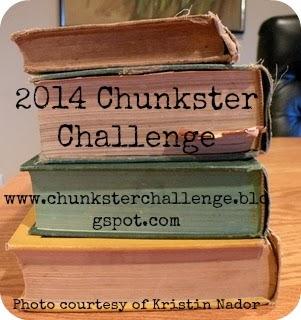 Welcome to British Isles Friday! British Isles Friday is a weekly event for sharing all things British — reviews, photos, opinions, trip reports, guides, links, resources, personal stories, interviews, and research posts. Join us each Friday to link your British-themed content and to see what others have to share. The link list is at the bottom of this post.
Welcome to British Isles Friday! British Isles Friday is a weekly event for sharing all things British — reviews, photos, opinions, trip reports, guides, links, resources, personal stories, interviews, and research posts. Join us each Friday to link your British-themed content and to see what others have to share. The link list is at the bottom of this post.
Last week’s collection of posts included book reviews, photos, a shadow of the Booker Prize, food, and taxes (blame the English, or maybe the Romans). After seeing Louise’s post, with photos, about the Charles Dickens Museum in London, I added that site to the list of attractions I want to visit.
For my post today, I’m reviewing Quicksilver by Neal Stephenson.
Book: Quicksilver: Volume One of the Baroque Cycle by Neal Stephenson
Genre: Historical fiction
Publisher: William Morrow
Publication date: 2003
Pages: 927
Source: Library

Quiicksilver means mercury.
Summary: I started Quicksilver as a fun way to learn some of the history of the late 1600s in England — the period that saw the Plague, the Great Fire, and the beginning of The Royal Society. At first, I thought I wandered into the wrong book since it started on the wrong continent (the American colonies) and the wrong century (early 1700s). But it wound its way back in time and not only to England but all over Europe.
We spend a lot of time with fictional Daniel Waterhouse who rooms with the not-fictional Isaac Newton and comes to know all of the scientific and political minds in London. When Waterhouse’s point of view is too limiting, we wander around Europe with Jack Shaftoe, a British-born vagabond and sometimes soldier, and Eliza, who turns the skills she learned in a harem to make a fortune in Amsterdam while making herself known in the courts of Europe, particularly Versailles.
Thoughts: I haven’t decided if what I’ve entered into, here, is a story or an addiction. I read all 900+ pages, so obviously I liked it.
One way that Stephenson keeps us entertained through 900 pages is by switching up the format. Some sections appear as plays, others as letters, there’s a little poetry, and a few passages are from the point of view of an obviously deranged narrator.
But now what? It took me three months. If I want to read anything else this year (and I do: list of books to read Spring 2014, list of books to read before the England trip), I can’t go directly into the next book in this series. But if I don’t start The Confusion right away, I’m afraid that I’ll forget everything I read and won’t be able to pick up the plot again. Apparently, The Confusion is set more away from England than it, so I could justify putting that off. But the third volume, The System of the World, is mostly set in London in 1714 — a time and place that I’m very interested in right now. And, I was rather hoping after reading the Baroque Cycle to get to the related, but different book, Cryptonomicon. I may need an intervention.
A long book did generate a number of interesting blog posts. Here are two descriptions of France in the 1600s:
- Versailles
- Les Halles in Paris
And, here are some posts I did about words from Quicksilver, including a childhood memory invoked by the title:
- quicksilver
- lanugo, lanthorn, sizar, reticule, and reticle
- obloquy
- obnubilated
Appeal: Quicksilver is for lovers of giant books and history — especially of science, but also the geopolitical landscape of Europe in the late 17th century as well as the lives of ordinary people.
Reviews: I like that the Resolute Reader also struggled with how to review such a large book — but managed it with more completeness than me. Pat at Pat’s Fantasy List found herself, like me, a bit surprised to be reading this sort of book, especially at this length and enjoying it.

Have you read this book? What did you think?

